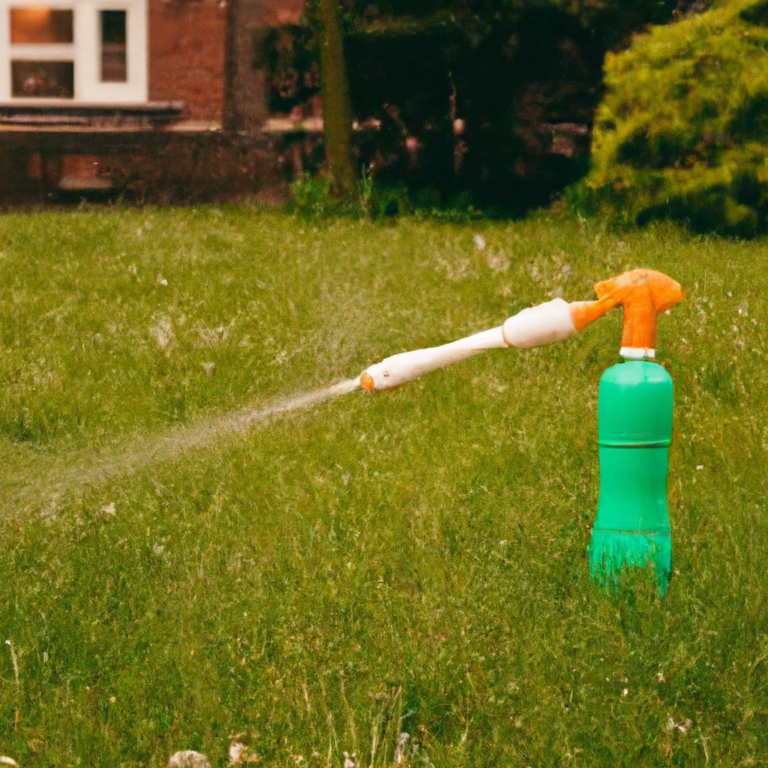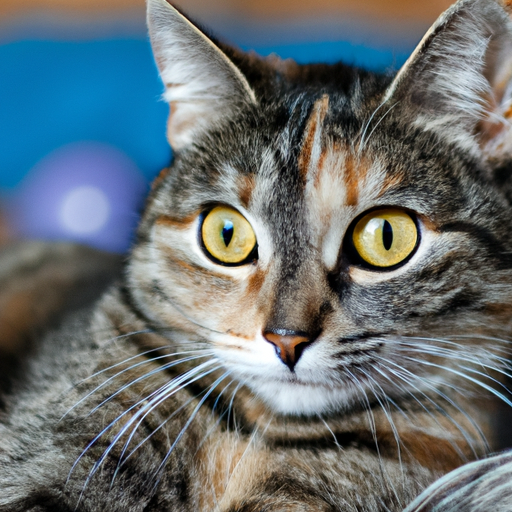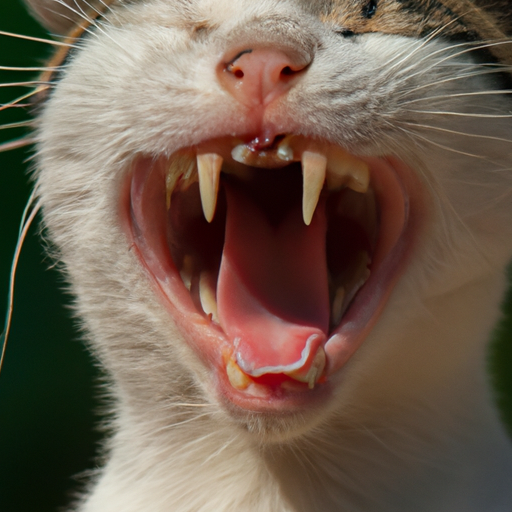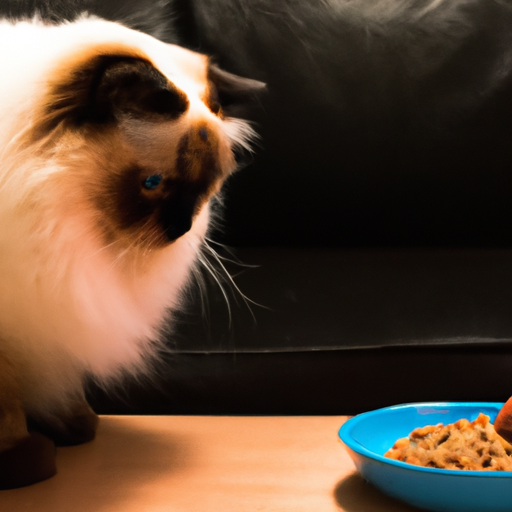Why Are Cats Afraid Of Cucumbers?
You’ve probably seen those viral videos where a harmless cucumber sends a cat sky-high in terror. If you’re like most, you’ve chuckled at the sight, but might have wondered, “Why are cats afraid of cucumbers?” This article provides a fascinating look into the feline psyche, using behavioral science to explain what’s behind this peculiar phenomenon. From instinctual responses to surprising stimuli, join us in unraveling this curious cucumber conundrum.
Understanding Cats’ Fear Response
Before we dive into the mystery of why cats might be afraid of cucumbers, let’s first try to understand cats’ general fear response. Fear is a fundamental emotion that exists across all species, and it evolved as a survival mechanism. It’s a mechanism that’s hardwired into the biology of all species, including humans and cats alike.
Explaining the evolutionary root of fear
The fear response evolved as a crucial survival mechanism in the wild. It’s the body’s natural defense against perceived threats or danger. When an animal, such as your pet cat, feels threatened, its body goes into a state of hyper-arousal known as the ‘fight or flight’ response. This, in turn, triggers a cascade of physiological changes designed to help the animal escape the threat or face it.
How fear plays a role in survival
Your cat’s ancestors were solitary hunters, relying on stealth and quick reflexes to catch their prey. Being always alert and ready to react to a possible threat was, and still is, crucial for a cat’s survival. Even in the comfort of a modern home, these instincts remain intact and can be triggered by anything that resembles a potential danger.
The specifics of cats’ fear response
Your cats’ fear response is complex and involves several behavior changes such as dilated pupils, flattened ears, hissing or growling, and even defensive aggression. Furthermore, it’s not just about the presence of a threat, but also how unexpected it is, which is where cucumbers come into play.
Examples of typical fearful behaviors in cats
How do you know if your cat is scared? There are several telltale signs. Your cat might arch its back, puff out its fur, or hiss. It might also engage in more passive fear responses such as hiding or attempting to make itself look bigger.
The Viral Phenomenon of Cats and Cucumbers
Moving on from the general fear response in cats, let’s now delve into the unique phenomenon of cats and cucumbers, which has taken the internet by storm in recent years.
Trend of ‘cucumber scare’ videos
Videos of cats getting scared by cucumbers started trending a few years ago. The premise was simple – a cat owner would silently place a cucumber behind their unsuspecting cat. When the cat turned around and saw the cucumber, it would often jump in fear, providing a funny surprise for the viewer.
Public response and spread of the phenomenon
These cucumber scare videos quickly went viral, spreading rapidly across various social media platforms. People seemed to find this strange reaction of cats amusing, and more and more cat owners began testing the cucumber trick on their pets, often with hilariously entertaining results.
Concerns from the animal welfare community
However, amidst the laughter and shared entertainment, concerns started rising from animal activists and experts. They noted that the cucumber scare prank could be harmful, causing unnecessary stress to the cats and potentially leading to injury as they try to get away.

The Reality of Cats’ Fear of Cucumbers
But, is this phenomenon of cats being scared of cucumbers real? Or is it just an internet-made myth? Let’s look at some aspects.
Is it a real fear or internet-made myth?
While not all cats react with fear to cucumbers, a significant chunk appears to, judging from the numerous videos online. However, without substantial scientific studies to back it up, we can’t exactly affirm it as an absolute truth.
Observed reactions of cats with cucumbers
The reactions shown by cats in these cucumber scare videos vary, ranging from mild curiosity to intense fear, with some cats literally jumping into the air. It seems that some cats are more affected than others, which leads us to consider individual differences in cats’ perceptions and reactions to potential threats.
Overview of different cats responses
Although the cucumber prank led to lots of laughs for people watching the videos, the responses from the cats were anything but happy. Many cats seemed genuinely frightened, with reactions ranging from a quick jump to a full-blown panic attack.
Reasons Behind Cats’ Fear of Cucumbers
Why would cats react so fearfully to a harmless vegetable? Here are some hypotheses.
Unexpected presence
One of the main reasons is likely the surprise factor. Cats are often not aware that a cucumber has been placed behind them until they turn around and find it very close.
Association with predators
Another theory is that the cucumber might resemble a snake, a known predator of cats. The unexpected sight of what they think might be a snake can definitely cause a fearful reaction.
The shape and size of cucumbers
The shape, size, and color of cucumbers might also trigger a cat’s instinctive fear response. The elongated shape is quite unusual in a household context.
Cucumbers in cats’ peripheral vision
Finally, cats have excellent peripheral vision which they use to detect motion and changes in their environment. A cucumber suddenly appearing in their field of vision can undoubtedly lead to a surprised reaction.

The Role of Cucumbers’ Shape and Color
Let’s delve a bit deeper into why the physical attributes of cucumbers can cause fear in cats.
Why shape and color might cause fear
The elongated shape and green color of cucumbers can make them resemble a snake, which is a natural predator of small animals like cats. Your cat might mistake the cucumber for a snake and react from a purely instinctual place.
Comparison with other similar objects
Interestingly, some cat owners have experimented with other objects similar in shape and size to cucumbers, such as bananas or zucchini, and have reported similar reactions. This further supports the idea that it’s the unexpected presence and strange shape of the object that scares cats.
Experiments with different shapes and colors
However, to truly understand if the shape and color are the main factors causing the fear, more experiments would be required – perhaps using differently colored cucumbers or other objects that are similar in shape but different in color.
Potential Harm to Cats
Despite the humor that the cucumber scare videos might create, the act can actually cause harm to your feline friends.
The stress effects on cats
Scaring your cat for entertainment purposes, such as with the cucumber prank, can cause significant stress for your pet. Excessive stress can lead to a range of health issues, particularly related to their immune and cardiovascular systems.
Potential physical harm due to sudden reactions
When scared, cats can react very quickly in an attempt to escape the perceived threat. This could lead to physical injury as they might run into furniture or other hazards in their environment in their rush to get away.
Long-term psychological impacts
Repeated pranks could also have longer-term psychological impacts. Cats may start to feel insecure in their environment if they feel they can’t predict when they’ll be scared again.
Views from Animal Behaviorists and Vets
This unexpected fear phenomenon caught the attention of many animal experts too. Let’s see what they think about it.
Professional opinions on the cucumber scare phenomenon
Most animal behaviorists and vets advise against scaring cats with cucumbers. They state that it’s not only entirely unnecessary but can also stress your pet and potentially even lead to an injurious situation.
Scientific explanations for cats’ reactions
As for the scientific explanation behind this phenomenon, animal experts echo many of the theories we’ve already discussed. Cats might perceive the cucumber as a predator due to its snake-like appearance and the unexpectedness of the situation.
Advice to pet owners
The main advice animal experts have for cat owners is to provide them with a safe and predictable environment. Scaring them for our amusement is not responsible pet ownership, they affirm.
Experiments Testing Cats’ Fear of Cucumbers
While there is a plethora of videos showing cats being scared of cucumbers, few scientific studies have been carried out to investigate why.
Design of typical cucumber tests
So far, most of the experiments have used a simple approach: introducing a cucumber to a cat’s environment and observing its reaction. However, these studies have varied in their design, some placing the cucumber right behind the cat and others providing the cat with a clear view of the cucumber as it is placed within their environment.
Results and interpretations
The results of these experiments remain fairly mixed. While there is a predominant fright response from many of these tests, the extent of the fear response ranges from mild apprehension to severe alarm.
Differences in individual cat responses
It’s also important to note the individual variation in cats’ reactions. Not all cats demonstrate a fear of cucumbers. This highlights the role of individual differences in cats’ responses.
Alternatives to Scaring Cats for Entertainment
Given the potential harm that can come from scaring cats with cucumbers and the advice from experts, it’s important to find alternatives.
Critique of the cucumber scare trend
There’s been a significant critique of this trend as it advocates for scaring pets for human entertainment, which is not considered ethical by many.
Positive ways to engage and play with cats
Fortunately, there are many alternative, fun and healthy ways to interact with your cat. This could include interactive toys, puzzle feeders, laser pointer games, simple affectionate petting, or even the age-old habit of using a ball of wool.
Promoting healthy pet interaction
The key is to create positive experiences for your cat that build trust and deepen the bond between you two. After all, pets are not just for our amusement, but companions to be cared for and respected.
Tips to Help Overcome Cats’ Fear of Cucumbers
In case your cat is already scared of cucumbers, there are a few things you can do.
Safe exposure to cucumbers
Start by exposing your cat to cucumbers safely without any sudden surprises. Leave a cucumber in a place where your cat can approach it on its own terms.
Steps to gradually reduce fear
Gradually reducing your cat’s fear response through systematic desensitization and counter-conditioning might help. This involves slowly getting your cat used to the presence of a cucumber while associating it with positive experiences, like treats.
When to consult a vet or animal behaviorist
If your cat continues to show severe fear responses, it would be beneficial to consult a vet or animal behaviorist. They can provide you with professional guidance on managing your cat’s fear and ensuring their wellbeing.
In conclusion, while the internet trend of cats being scared by cucumbers might be funny to some, it’s essential to remember it can cause stress and harm to the cats involved. The best thing we can do for our furry friends is to provide them with a safe and predictable environment where they feel comfortable and secure. If amusement is your goal, there are plenty of other ways to interact with your cat that can bring joy to you both without causing unnecessary fear.






